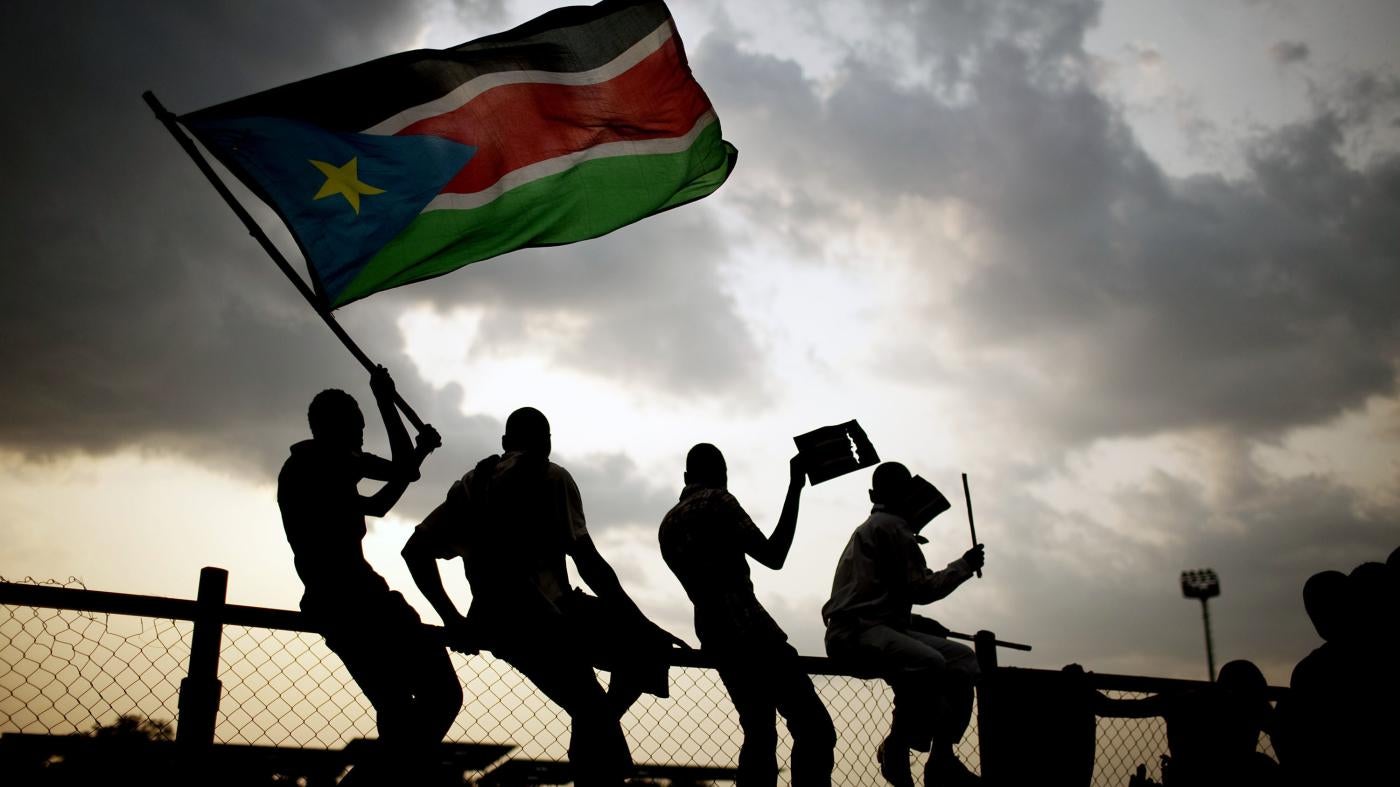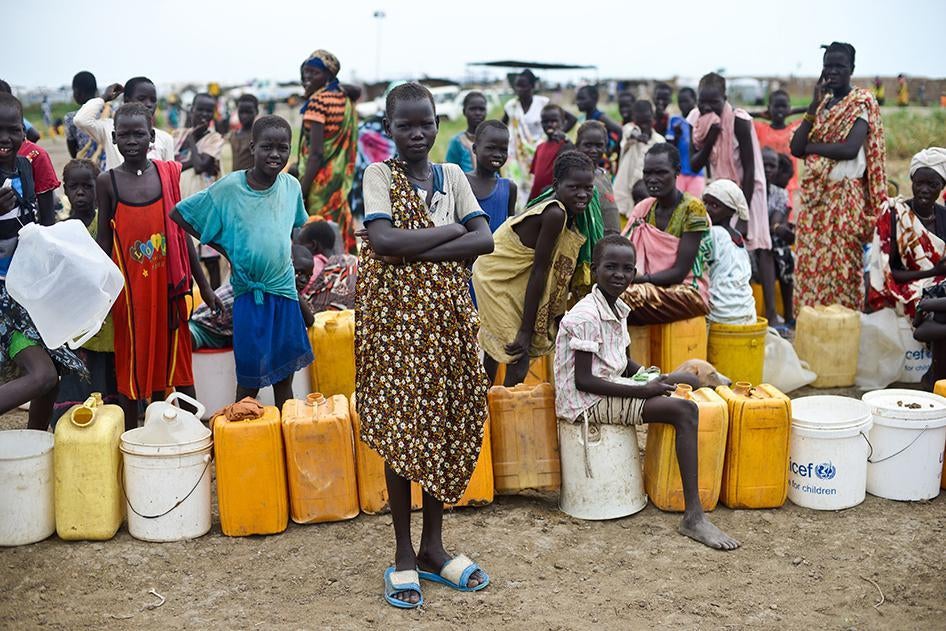What are some of the biggest challenges South Sudan has today?
South Sudanese voted to secede from Sudan in January 2011 and became an independent state on July 9 that year. The excitement and energy were unparalleled. But in December 2013, a civil war dashed the hopes and plans of the new nation.
The war was fought between the government forces of President Salva Kiir, armed opposition group Sudan People’s Liberation Army-in Opposition (SPLA-IO), led by now first vice president, Riek Machar, and other armed groups and affiliated militias. In accordance with the 2018 peace deal, they formed the Revitalized Transitional Government of National Unity in February 2020. Since the new government includes members of previously warring parties, related violence has declined. The peace deal, however, is tenuous as its implementation has been delayed. It is also deemed to have not addressed the root causes of the war, including grudges between the country’s leaders.
But violence between communities has increased, due in part to spillover grievances from the war and competition over land, cattle, and grazing, resulting in hundreds of thousands of people being killed or displaced. Political and military leaders have added to the violence by supplying weapons to communities. Additionally, a conflict in parts of Central Equatoria between government forces and the armed opposition group, National Salvation Front, has included many attacks on civilian populations.
The human rights situation also remains dire. The space for citizens to question authorities or participate in issues of governance has shrunk. Rather than treating media and press as allies in building the new nation, authorities have moved to silence them. A crackdown during the civil war that saw journalists and activists attacked, detained, surveilled, and forced to self-censor by security services has continued today. In August 2020, soldiers and police shot at protestors marching against the killing of civilians by soldiers in Sherikat. In March 2021 police arrested youth protesting the state of public roads and health services.
Despite the government’s attempts to muzzle free speech and information, young people are using creative approaches to organize, raise awareness, discuss important issues, and call for change. Social media and blogging websites have provided much-needed alternative civic space.
But authorities need to ensure traditional media can also operate unrestrained.
The government has also failed to invest in infrastructure and basic services like education and health care. Over 4.8 million children are out of school due to inaccessibility and limited provision of education opportunities and Covid-19 school closures. For girls, access to education is hindered by poverty, violence, child marriage, and cultural biases that undermine their equality. One third of schools are damaged or destroyed due to attacks against education and the use of schools by armed forces and groups.
About 8 million people in South Sudan are facing hunger or famine conditions. Poverty is pervasive and limited support for peoples’ livelihoods has enhanced violence in communities. Aside from getting little help from their own government, South Sudan relies heavily on aid support, much of which dried up due to conflict and donor countries mistrust of the government’s unaccountable spending and corruption.
How did we get here?
The government formed in 2011 to lead South Sudan was weak from the start. The referendum that led to independence from Sudan resulted from a peace process that ended one of Africa’s longest wars, but it did not account for the years of brutality all sides committed against civilians. It also failed to address the deep disenfranchisement and grievances of many in the south that were already creating new armed insurgencies.
The civil war that broke out in December 2013 was a result of a power struggle between the political elite who manipulated ethnic divisions and grievances. The new unity government was set up to end the violence, but it has done little to end the human rights abuses.
How has the government held up its promises since independence?
The government has mismanaged resources, failed to clamp down on corruption, and has not delivered on promises to invest in education and fight hunger. For ten years, the government has been absent in peoples’ lives. Politicians have exploited ethnic divisions and community grievances at the local level, creating more conflict. And there is little recourse for justice, as judicial infrastructure in South Sudan is virtually broken.
Many essential services, like education, health, and providing water and sanitation, are left to humanitarian agencies and local organizations. But the government has failed to end obstruction of humanitarian aid or protect humanitarian workers. At least 128 aid workers, most of them South Sudanese, have been killed since the war began, and there has been little accountability.
Do people in South Sudan have a chance for justice?
The peace deal establishes what is meant to be a holistic approach to justice. It includes the creation of a commission for truth, reconciliation, and healing to investigate the legacies of war and recommend remedies for victims’ groups and survivors. It also proposes a reparations authority to award compensation to individuals who have suffered material damages to their property. Finally, it provided that a hybrid court be established with the African Union to try individuals most responsible for the abuses committed during the war and throughout a 36-month transitional period. In January 2021 the government finally gave approval to establish these institutions, including the war crimes court. Now, the government should follow through.
The government also has to build credible institutions in South Sudan for justice and security. People need to believe their leaders can treat them equally and fairly, and that they can rely on their leaders to protect them and provide for their basic rights and needs.
You were in South Sudan in 2013 when the war broke out. What was that like?
I had just graduated university and flew home two nights before the fighting started. During the night of December 15, we heard gunfire coming from the military base in Bilpham, and assumed it was soldiers celebrating. At that point, no one really knew what was going on. The next morning, my sister and I were preparing to go to work when our aunt and her family came and said she had been running and hiding all night, that soldiers were hunting people and fighting each other. We started making calls, trying to figure out what was going on, and someone said, “Riek Machar has rebelled, the country is at war.”
I was born in Ethiopia as a refugee because my family had fled the war in Sudan, but this was the first time I was hearing the bullets and seeing the chaos. My family and I eventually went to a United Nations base and stayed there for two weeks. Many people in that area who stayed in their homes were attacked and killed. Eventually, we risked leaving the UN base and traveled by car over the border to Uganda and then to Kenya.
Soon after, I began documenting the horrors of the war – the rapes, the killings, the brutal attacks, and detentions – and the abuses committed by the government and opposition forces, first for a local then international organization. Having been a witness as a young South Sudanese who had great ambitions for her future and country, I have helped build an accurate historical representation of what the war has done to our country and to find solutions that will not gloss over the abuses, the pain, and horror.
Do any of those stories stand out to you now?
At the height of the offensive in Unity state in May 2015, I spoke with one woman who walked into a United Nations camp carrying three of her children in a basket on top of her head and with her young daughter walking behind. Her father and husband had both been killed, and her children had witnessed it. She had spent five days wading through a swamp with her children, eating waterlilies. Her testimony, along with her strength and grace were symbolic of how the war had impacted civilians, including their mental health.
What gives you hope for South Sudan’s future?
What started with so much excitement and anticipation has led to frustrating transition due to the war. Healing and moving the country forward is easier said than done.
South Sudan has among the youngest population in the world, with more than 70% under the age of 30. They were told that independence and the new country was for them. And despite living through violence and disenfranchisement, lots of youth in South Sudan are creative and have great potential. The promises of the liberation were about progress, human rights, and not being seen as second-class citizens. South Sudanese people, and particularly young people, need to be able to feel that they own independence, and they own the future.
*This interview has been edited and condensed.







![Former National Security Service official Akol Koor Kuc [left] is pictured with President Salva Kiir (R)](/sites/default/files/styles/square/public/media_2021/04/202104africa_southsudan_kiir_kuc.jpg?h=a7b2d30a&itok=7LF9qkCq)

